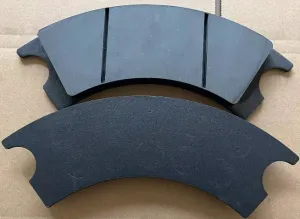4,976
November 28, 2024, 9:33 AM
Upstream production areas: China's cutting suspension period is approaching, cost prices are firm

Judging from the seasonal output trend of China's natural rubber, November is in the transition period from the high-yield period to the cut-off period. Yunnan and Hainan production areas have successively entered the cut-off period, and the total glue output has decreased. In the short term, there is still support for China's raw material prices and costs. Look at the overall output situation by different production areas.
HainanProduction area:In November, raw material prices in Hainan's producing areas maintained a narrow range of fluctuations, with relatively limited changes. In early November, precipitation disturbances continued for some time in Hainan's production area, but the time was relatively limited. As the weather conditions improved, raw materials gradually returned to seasonal increases. However, typhoon news still had an impact during the cycle, and was boosted by higher futures. Some processing factories 'enthusiasm for seizing glue has warmed up, and raw materials are more active in replenishing warehouses, which in turn drives the purchase price of raw materials to remain relatively strong. After entering the second half of the year, rainy weather appeared, and with the cooling of temperatures in Hainan, the dry content of fresh glue in the central and eastern regions dropped to around 27-28. The circulation of raw materials in the market was relatively limited, and local processing plants still needed to purchase at a higher price.
YunnanProduction area:The weather conditions in Yunnan's producing areas are good, and rubber tapping work is proceeding normally. It is expected that most rubber forests will stop cutting at the end of this month. The amount of raw glue will gradually decrease. It is heard that the current dry content has dropped to around 25. The processing plant is currently operating well, and the progress of winter storage and material preparation is average. Most of the imported raw materials are imported from Laos. Some factories have reported that the current raw material inventory can maintain normal production for about 2 months.
Downstream demand: . The operating rate of tire companies increased slightly
In terms of all-steel tires, at the beginning of the month, some companies arranged maintenance. In addition, the pace of shipments of some companies slowed down at the beginning of the month, dragging the overall operating rate down slightly. In the latter half of the year, the production scheduling of maintenance enterprises has gradually resumed, driving a recovery increase in the overall operating rate. Some enterprises still have independent production control arrangements, which has limited the increase in overall capacity utilization. Most factories continue the price policy of the previous month. The market performance was flat, with early orders from channel merchants and terminal stores arriving one after another, channel inventory was sufficient, and the ability to replenish again was insufficient. The performance of the terminal market was flat. As the northern market gradually enters the off-season, operators are not optimistic about recent shipments.
In terms of semi-steel tires, the operating rate remains at a high level of around 80% for most of the time. During the May Day holiday and the National Day holiday, due to the arrangement of holidays by some tire companies, the capacity utilization rate has declined. At other times, basically Maintain smooth operation. Such a high production schedule is mainly driven by the stable demand for semi-steel tires in the past two years. As of now, the demand for semi-steel tires still needs support. Although there are fluctuations in exports and there are certain concerns about the trade barriers of the new U.S. government, it has not had a significant impact on the current pace of production scheduling.
On the whole, based on the current fundamentals of rubber, the increase in overseas supply is expected to remain unchanged. However, the rainy season in southern Thailand disrupts the harvest of rubber, and Thai glue is still driving upward. China's raw material output is coming to an end, and the market's bullish sentiment has increased. China's natural rubber stocks have entered a cumulative stage, which may suppress the bullish atmosphere in the market, but the absolute value of stocks is low, which is compounded by the recent or dumping of stocks, which has disrupted the market. In terms of downstream demand, the market supply is sufficient, and shipments of all steel tires through channels are poor. Agents use them as they please, focusing on completing tasks. Upstream raw material prices are under pressure, downstream actual demand is relatively limited, and the short-term rubber price increase momentum is relatively weak, and it is expected to remain volatile.












